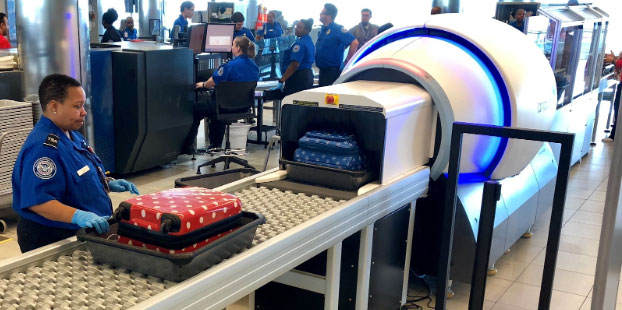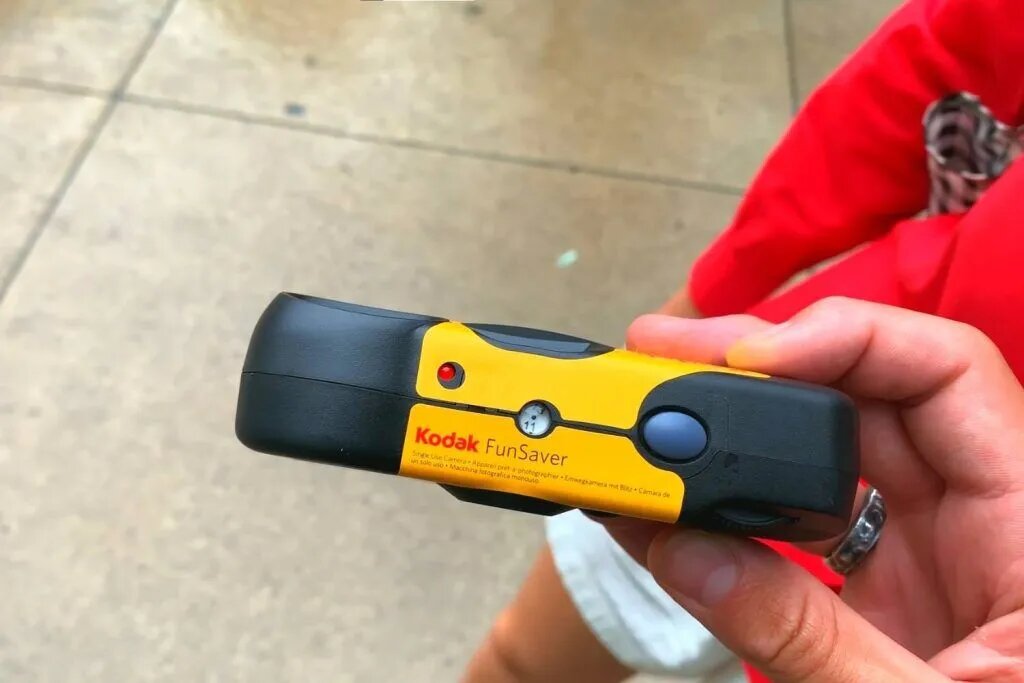During my trip, I wondered, do disposable cameras screw up at airport security? I didn’t ask to check manually, and sadly my photos came out streaky and blurry. Now, I always request a manual inspection to protect my film.
Do disposable cameras screw up at airport security? Yes, X-ray scanners can damage the film. Request a manual check-in to preserve your memories!
Introduction To Disposable Cameras Get Ruined In Airport Security
Do disposable cameras screw up at airport security? This is a common concern for travelers carrying film cameras. Airport X-ray scanners, especially high-intensity ones, can damage undeveloped film, causing streaks or blurred images. Knowing how to protect your camera can help preserve your precious memories.
Can Disposable Cameras Go Through Airport X Ray
Yes, disposable cameras can pass through airport x-ray machines, but it’s not always safe to film them. Low-intensity scanners used for carry-on bags are less likely to cause damage, especially for film under ISO 800.

However, high-intensity scanners for checked goods can damage the film, causing fogging or discoloration. To protect your disposable camera, request a hand check at security checkpoints.
Fujifilm Disposable Camera Through Airport Security
Taking a Fuji film disposable camera through airport security requires special care, as its undeveloped film can be affected by X-ray scanners. Here is a detailed explanation:
1. Carry-On Vs. Checked Baggage:
- Carry-on baggage scanners: These use low-intensity X-rays, which are generally safer for films at ISO 800 or lower. However, repeated exposures can damage your film, especially for sensitive Fujifilm models.
- Equipment inspection scanners: These use high-intensity X-rays, which can permanently damage your film, causing fogging or a faded appearance.
2. Fujifilm-Specific Considerations:
Fujifilm disposable cameras usually use ISO 400 or 800 film. ISO 400 is generally safer when passing through carry-on X-rays, while ISO 800 is more sensitive and more likely to be damaged.
3. How To Protect Your Fujifilm Camera:
- Request a hand check: At the security checkpoint, inform the TSA officer that you have film in your Fujifilm disposable camera and request a hand check.
- Film pouch or shield: Use a lead-lined film pouch for added protection, although this may prompt additional screening by security personnel.
4. Tips For Travel:
- Pack the camera in your carry-on, not your checked baggage.
- Limit the number of scans by keeping it away from unnecessary screening during layover.
Kodak Disposable Camera Airport Security
When traveling with a Kodak disposable camera through airport security, it’s important to understand how airport x-ray machines can affect the film inside. Here’s a detailed breakdown:

1. X-Ray Machines And Film Sensitivity:
- Kodak disposable cameras: These typically use 35mm film, often with an ISO 400 or 800 rating. ISO 400 is less sensitive to light and can usually handle scans by carry-on security scanners, but ISO 800 is more sensitive and prone to damage. The stronger the scanner, the greater the risk of fogging or discoloration of the undeveloped film.
2. Carry-On Vs. Checked Baggage Scanners:
- Carry-on luggage: X-ray scanners used for carry-on bags are usually low-intensity, meaning Kodak disposable cameras with ISO 400 film can survive with minimal damage. However, for high ISO films like 800, you may see some effect, especially with multiple scans or high radiation exposure.
- Checked Equipment: X-ray machines for checked equipment are much more powerful and can permanently damage the film inside Kodak disposable cameras. The film may be foggy, washed out, or have strange streaks that distort images. Therefore, it is best to avoid packing disposable cameras in checked baggage if you want to protect your images.
3. How To Safeguard Kodak Disposable Cameras:
- Request a hand check: The best way to ensure the safety of your Kodak disposable camera is to ask airport security for a hand check. This completely protects the film from being exposed to X-rays.
- Use a pouch with a lead line: You can use a pouch with a lead line to protect the camera from X-rays. While this may attract extra attention during security checks, it can provide additional protection against film damage.
- Always store: your Kodak disposable camera in your carry-on luggage. This minimizes the risk of your checked baggage being exposed to the strong X-rays used in scanners.
4. Other Tips For Travelers:
- Notify Security Officers: Before going through the scanner, tell security staff that you have a disposable camera with undeveloped film inside. They may allow hand checks without additional testing.
- Limit exposure: If you’re traveling with multiple disposable cameras, try to limit the number of times your film is exposed to X-ray scanners, especially during layovers or transfers.
Can You Take A Disposable Camera Through Airport Security
Yes, you can take a disposable camera through airport security, but there are important precautions to take to ensure your film stays safe. Here’s a detailed explanation of how airport security affects disposable cameras and the best practices to follow:

1. X-Ray Scanners And Film Sensitivity:
Disposable cameras usually use 35mm film, which is light-sensitive, particularly when undeveloped. Airport security scans both carry-on and checked baggage with X-ray machines, which could damage the film inside your disposable camera. The risk of damage depends on the X-ray intensity and the film’s ISO rating.
- ISO 400 or lower: Films with a lower ISO rating (such as ISO 200 or 400) are generally more resistant to damage from X-ray scanners, especially those used in carry-on bags. are used for However, repeated exposure to X-rays or high-intensity scans still presents a risk of blurring or discoloration.
- ISO 800 or higher: Films with a higher ISO rating (such as ISO 800) are more sensitive to X-ray radiation and are more likely to be damaged. This is especially true if the film is exposed to high-intensity scanners, which are commonly used for checked goods.
2. Carry-On Vs. Checked Luggage:
- Carry-on luggage: When you bring a disposable camera in your carry-on bag, it will go through a low-intensity X-ray scanner. These scanners are less likely to damage your film, but the risk is still there, especially for high-ISO films. If you’re carrying a camera with ISO 800 film, it’s more likely that some photos will be negatively affected by the scanner.
- Checked Goods: X-ray machines for checked goods are too powerful and can cause significant damage to undeveloped film, including fogging and streaking. It is strongly advised that disposable cameras are never used in checked goods. Do not pack to protect the film inside.
3. How To Protect Your Disposable Camera:
- Request a hand check: To make sure your disposable camera film is not exposed to X-ray radiation, you can ask TSA or security staff to do a hand check. Tell them that you have undeveloped film in your camera, and that they should inspect it manually without using an x-ray scanner.
- Lead Lined Pouch: Another option is to use a lead lined film pouch, which can protect the film from the effects of X-rays. This method can be a bit more involved as security staff may need to manually check the pouch, but it adds an extra layer of protection.
4. Other Important Considerations:
- Inform security staff: Always inform security officers that you are carrying a disposable camera with film. This will give them a head start, and they may allow you to bypass the X-ray scanner or offer additional protections.
- Limit exposure: If you have multiple disposable cameras, try to avoid exposing them to X-rays multiple times during layover or connection. Each scan increases the risk of film damage.
- Avoid multiple scans: When possible, try to keep your camera away from security screening during connection or layover. If it is scanned more than once, the risk of damage increases.
5. What To Expect During Security:
When traveling with a disposable camera, the safety process will generally be the same as with anything else. However, keep in mind that if security personnel don’t realize you have undeveloped film in your camera, they can still scan it. So it is very important to notify them ahead of time and request a manual check.
By following these guidelines, you can travel safely with a disposable camera and avoid ruining your film at airport security. Always take extra precautions, especially if you want to preserve important or unique memories.
FAQ’s
1. Is My Disposable Camera Ruined If It Went Through Tsa?
It depends on the intensity of the X-ray. Low-intensity scanners won’t cause damage, but high-intensity scanners can ruin your film.
2. Do Airport Scanners Ruin Film Cameras?
Airport scanners can damage undeveloped film, especially in high ISO cameras, causing fogging or discoloration.
3. What Ruins Disposable Cameras?
Exposure to strong X-rays, extreme temperatures, or physical damage can destroy disposable cameras and their film.
4.Do Cameras Get Ruined In Airport?
Usually not, but if you have undeveloped film inside, airport scanners can potentially damage it.
5. Will Disposable Cameras Get Ruined In Airport Security?
Yes, if exposed to high-intensity X-rays, disposable camera film can be damaged, especially with high ISO ratings.
Conclusion:
Do disposable cameras screw up at airport security? Yes, airport x-ray scanners, especially high-intensity ones for checked baggage, can damage undeveloped film. To protect your photos, request a hand check at security or use a lead-lined pouch to minimize exposure.

